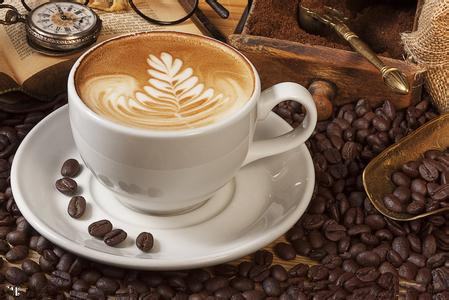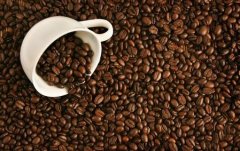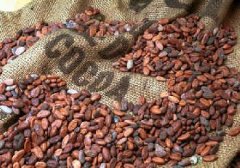There are 8 main factors that affect coffee sharing.

There are eight main factors affecting coffee: 1, grinding degree, 2, powder pressing strength, 3, extraction pressure, 4, powder quantity, 5, temperature, 6, water quality, 7, human, 8, machinery and equipment.
Degree of grinding:
The degree of grinding is very extensive, generally speaking, it is related to the variety of coffee beans and the degree of baking. The grinding degree of 100%ARABICA beans is generally a little thicker than that of mixed beans. To cook a perfect cup of Espresso has a certain range of grinding. When the grinding degree is too fine, when brewing coffee, the effluent will flow out in droplets, and the hot water will stay for too long, resulting in excessive extraction, and too rough grinding will cause coffee running, resulting in insufficient extraction and affecting the taste of coffee. Under normal grinding degree and normal extrusion degree, the outflow state of extracted coffee should be fine and uninterrupted, and the 30C.C.~35C.C should be finished within 25 seconds. Espresso coffee.
Powder pressing strength:
The filling pressure is so that the coffee powder can be extracted evenly. Because the coffee powder without filling pressure is easy to be broken down by hot water, resulting in uneven extraction. If the packing pressure is too dense, it will make it difficult for the hot water to pass through, resulting in excessive extraction. Proper filling pressure will match the characteristics and grinding of coffee beans.
Extraction pressure:
Also known as brewing pressure. A pressure of 8 to 9 bar is generally used. Why use this pressure? Because this is the empirical value obtained from the actual operation. Because too high pressure will break through coffee powder, create holes, form uneven extraction, and the pressure is too high, hot water passes through too fast, will cause insufficient extraction. Too little pressure will lead to excessive extraction.
Powder quantity:
This factor often affects the quality and taste of a cup of coffee. In general, the appropriate amount of powder is recommended around 7.5g/ per cup of Espresso, because too much powder will cause the coffee pressed powder to top to the effluent network, so that the coffee does not have sufficient room for expansion, resulting in over-extraction. If the amount of powder is too small, the thickness of pressed powder is insufficient, and it is easy to be broken down by hot water, resulting in uneven extraction.
Temperature:
Why temperature is listed as the first focus of discussion. Because other factors are better solved and there are coffee bean quality, different varieties are different. But the temperature is the most difficult for the average machine to master. Because coffee itself contains hundreds of very complex substances, and these substances will be extracted with different extraction temperatures, resulting in the ever-changing taste of coffee. Therefore, it is suggested that the best extraction temperature of coffee is between 90 °C and 92 °C.
Water quality:
This factor is often ignored and will become more and more important in the days to come. The essence of coffee beans is to be extracted, in which the minerals of water account for a large part, and the most suitable temperature for brewing coffee is
90 ~ 92 °C, can not reach boiling hot water, so a perfect filtration system will be very important. Generally boiled water or RO water is not suitable for brewing coffee. The importance of water quality is also related to the problem of overnight water, so it is necessary to let the water flow off overnight by brewing for 3 minutes at the beginning of the machine.
Human problems:
Combining all the above factors, it is the passive factor, and the last remaining problem is the problem of the operator. A good operator can always pay attention to the above key points, always pay attention to avoid making mistakes, and the effectiveness of milk foaming is also a personal factor. Therefore, to make a successful cup of coffee depends on a successful coffee operator.
- Prev

Basic knowledge of espresso Coffee "preparation" of Coffee pull
For all the coffee friends, especially those who are new to coffee, a very important reason why they want to learn about coffee is not to make it taste good, but to be most interested in the beautiful patterns on the coffee. Although the coffee flower looks beautiful, it is easy to watch others pull it, but it is really difficult to change it to yourself. In addition to long practice
- Next

Fine Coffee basic knowledge of Coffee what is caffeine
What is caffeine? in fact, we are in contact with caffeine every day. The main source of caffeine in the food industry is coffee beans. But the caffeine content of coffee beans varies from breed to breed. Some trees found in Ethiopia in 2004 contained 15 times more caffeine than the average. The amount of caffeine in a cup of coffee ranges from 75 to 250 milligrams. Caffeine in tea and cola
Related
- Beginners will see the "Coffee pull flower" guide!
- What is the difference between ice blog purified milk and ordinary milk coffee?
- Why is the Philippines the largest producer of crops in Liberia?
- For coffee extraction, should the fine powder be retained?
- How does extracted espresso fill pressed powder? How much strength does it take to press the powder?
- How to make jasmine cold extract coffee? Is the jasmine + latte good?
- Will this little toy really make the coffee taste better? How does Lily Drip affect coffee extraction?
- Will the action of slapping the filter cup also affect coffee extraction?
- What's the difference between powder-to-water ratio and powder-to-liquid ratio?
- What is the Ethiopian local species? What does it have to do with Heirloom native species?

